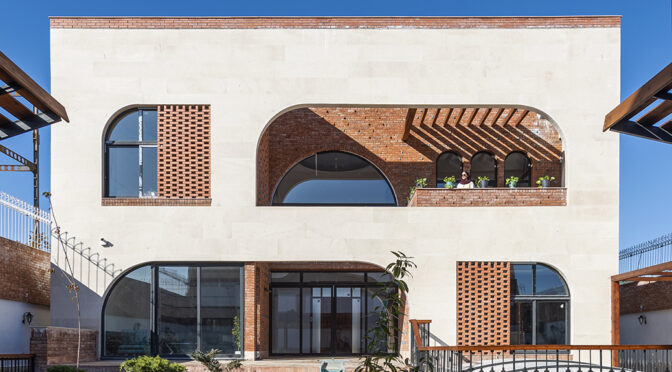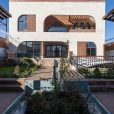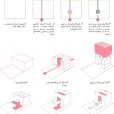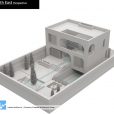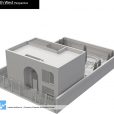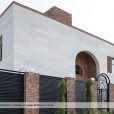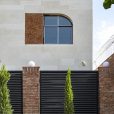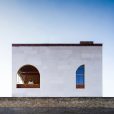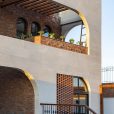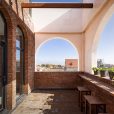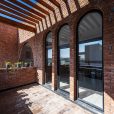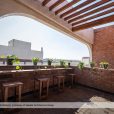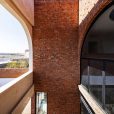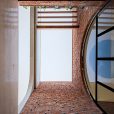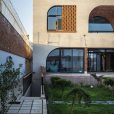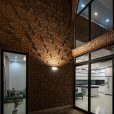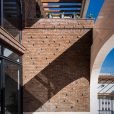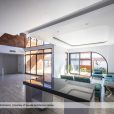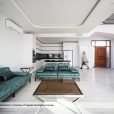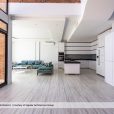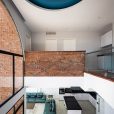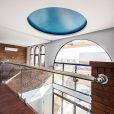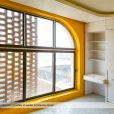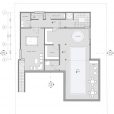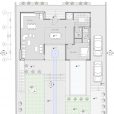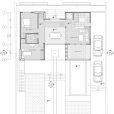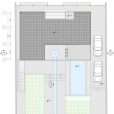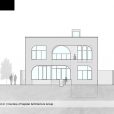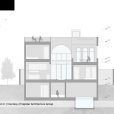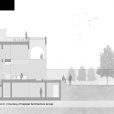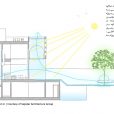ویلای سرخهحصار
دفتر معماری سپیدار (جواد شعری)
موقعیت: روستای سرخهحصار، شاندیز، مشهد، ایران
تاریخ: ۱۳۹۹
مساحت: ۴۲۵ مترمربع
وضعیت: ساختهشده
کارفرما: کتایون صدقیپور، سیروس شریعتپناهی
تیم طراحی: ملیحه ذبیحی، علی خدابخش، سیما شیرینژاد، آمیتیس عمادی
عکس: احسان آئین
در ابتدای طراحی، علاقهمندی کارفرما به معماری خانههای ایرانی، و همچنین تمایل ایشان به حفظ حریم خانه، به عنوان دو چالش اساسی پروژه مطرح شد. چالش دیگر، طراحی زمینی (اصطلاحا جنوبی) با قرارگیری توده در شمال بود که غالبا کیفیتهای نامناسبی را در ذهن ساکنین به همراه دارد، و همجواری بنا با جدارهها باعث نوعی سلب حریم میشود.
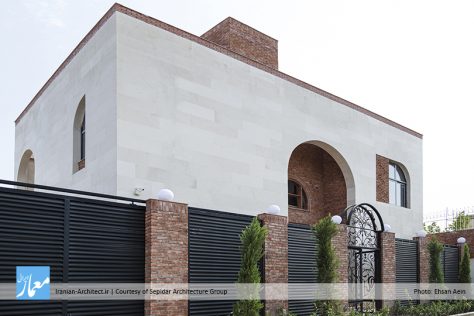
در روند طراحی، سعی بر آن بوده است که ضمن خلق فضاهای عملکردی، از نگاه فرمال پرهیز شود. از اینرو، با توجه به خواستههای مطرحشده، یک فضای گردشی در اطراف کل توده تعبیه، و فضای باز و شفاف کنترلشدهای در جبهه جنوب (در قالب تراس و بهارخواب)، با قابلیت استفاده فصلی، طراحی شد.
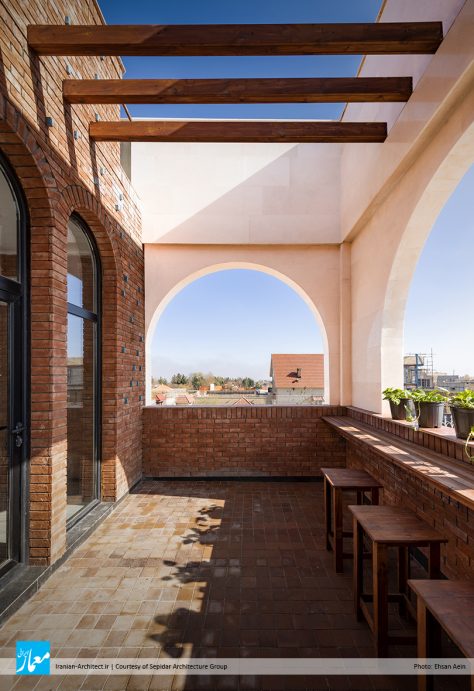
در ادامه طراحی، فضاهای خصوصی به همراه نشیمن اختصاصی، در طبقه بالا گنجانده شدند و محور سازماندهنده خطی در ترکیب با مسیر آب و تراس، توده بنا را به دو قسمت مساوی تقسیم کرد.
Sorkheh Hesar Villa
Sepidar Architecture Group (Javad Sheri)
Location: Shorkheh Hesar Village, Shandiz, Mashhad, Iran
Date: 2020
Area: 425 sqm
Status: Completed
Client: Katayoon Sedghipoor, Siroos Shariat Panahi
Design Team: Maliheh Zabihi, Ali Khodabakhsh, Sima Shirinezhad, Amitis Emadi
Photo: Ehsan Aein
Initially, the client’s reference to the interest in the traditional architecture of Iranian houses, as well as the desire to preserve the privacy of the house, were presented as two main challenges of the project. Another challenge was the location of the mass in the north of the project, which often brings inappropriate qualities in the minds of residents, and the proximity to the walls creates a kind of deprivation.
In the design process, efforts were made to prioritize the creation of functional spaces and the desired sense of space, rather than the project towards pure formalism. Therefore, according to the demands, a circulating space was placed around the whole mass, and a controlled open and transparent space on the south front (mostly terraces), with seasonal usability, was designed.
Subsequently, private spaces with a private living room were included on the upper floor, and the linear organizing axis, in combination with the water and terrace spaces, divided the mass into two equal parts.
Due to the location of the project, and the blowing of dry southern winds, water was added to humidify these winds, and use them in the natural ventilation of the project. Also, water is an important and inseparable element in the architecture of Iranian gardens (such as Fin Garden located in Kashan or Dolatabad Garden in Yazd), and practically adding water, in addition to climatic use, brings the spatial sense of the project closer to the concept of Iranian gardens.

